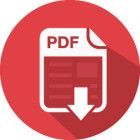Price $34.95
$33.20 (quantity of 5+)
$31.46 (quantity of 10+)
$29.71 (quantity of 20+)
$27.96 (quantity of 50+)
$26.21 (quantity of 100+)
For adolescents with reading disabilities, struggles with comprehension are a major obstacle to mastering academic content areas. Help resolve comprehension difficulties with this practical text, developed for use with students in Grades 6–12 with and without disabilities.
An ideal supplementary text for preservice special and general educators—and a great resource for inservice teachers looking for new comprehension strategies—this book is the key to understanding what's behind comprehension struggles and which strategies make a real difference for adolescent readers. Teachers will discover how to improve students' reading comprehension across content areas with specific, evidence-based strategies such as:
- mnemonics that help students remember and retrieve important information
- graphic organizers that highlight key information and clarify abstract concepts
- peer-mediated strategies that provide more opportunities for direct instruction and repeated practice
- motivational and self-efficacy strategies that encourage deep, focused, and engaged reading
- The Embedded Story Structure Routine, which teaches self-questioning, story structure analysis, and summary writing
- Collaborative Strategic Reading in student-led cooperative learning groups
- technology-based applications such as adapted digital texts, open-source textbooks, educational software, and virtual field trips
- multicomponent interventions such as reciprocal teaching and the SQ3R approach
To help teachers implement these highly effective comprehension strategies across a wide range of content areas, they'll get complete overviews of each strategy and how-to guidance based on recommended practice. They'll also get charts, graphic organizers, mnemonic strategies, and sample lesson plans they can use in their own classrooms.
With the proven, research-based strategies in this textbook, educators will be fully prepared to improve adolescents' comprehension skills and ensure that all students are confident, motivated readers.

 Proud to be Canadian
Proud to be Canadian
